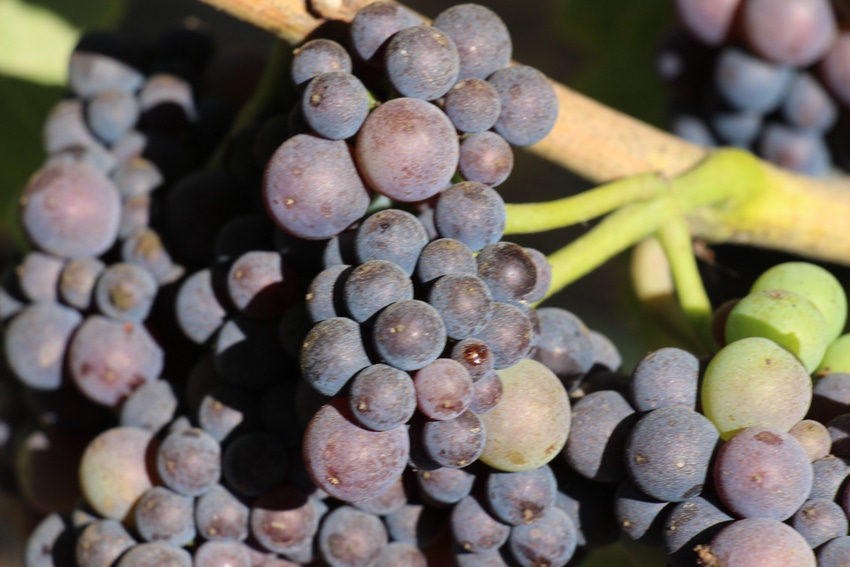
Throughout the 35 years she’s been growing wine grapes California’s Sierra Foothills, Gay Callan has been driven by a singular goal – to respect the land and the vines.
“Instead of taking advantage of what’s there, we’re always mindful of the importance of following practices that nurture the soils and paying attention to what the plants are showing and telling us,” she says. “We don’t beat up the land and over-crop. We want the flavor of the grapes to speak for themselves. So, we don’t mess with them. People who know our fruit know that it will produce wine that is consistent in quality and flavor profiles.”
Located in the Esmeralda Valley of Calaveras County near Murphys, her 65-acre Chatom Vineyards features 13 varieties. Those include: Chardonnay, Semillon, Sauvignon Blanc, Cabernet Sauvignon, Merlot, Zinfandel, Syrah, Sangiovese and four Portuguese varieties.
“Our warm days and cool evenings create the perfect climate for these grapes,” she says. Soils on this former cattle ranch vary from clay and sandy loam to shallow, rocky strata.
Nearly a decade after planting her first vines in 1981, Callan added a winery, which she sold last year. Now, Callan is back where she started, selling her grapes to local vintners.
She reports her vines have made it through the last few years of drought without a loss in crop quality. “We were delighted with what water we did have,” says Callan, who tries to limit use of well water to minimize pumping costs “We don’t have a lot of water here to begin with, so managing it wisely is very crucial. Also, we’re fortunate that we haven’t had to use much water for frost protection for a number of years.”
She’s encouraged by how this season is progressing, thanks in no small part to late winter and early spring rains – the most she’s seen during the period in a long time. In fact, on the first day of summer her reservoir was still half-full of water. That’s the latest the reservoir has had any water in it since the drought began.
“In the past two years, you could see the vines were highly challenged by the dry conditions,” Callan says. “But this year I’ve been extremely pleased with how the crop set and how the vineyards are looking at this point. The vines look a lot healthier.”
She started the season’s first round of drip irrigation the third week of June, just after finishing removal of suckers. Callan expects veraison to begin around the second or third week of July. She’ll drop fruit as needed to achieve her yield goals of 3 to 4 tons per acre. This year’s harvest could start in the second week of August.
Like others in her area, she’s concerned about the availability and cost of workers to tend the crop.
“With a number of labor contractors here going out of business, we’re now getting most of them from the San Joaquin Valley,” she says. “At the same time, the cost of workers keeps going up. It’s difficult for growers to raise the price of the grapes to fully cover the higher labor rates, because the wineries are limited by how much consumers are willing to pay for the wines produced in this area. As a result, more growers here are considering mechanical suckering, pruning and, possibly, harvesting of the fruit.”
About the Author(s)
You May Also Like




